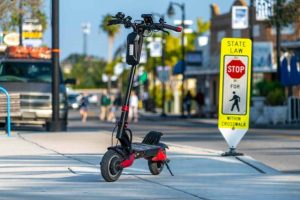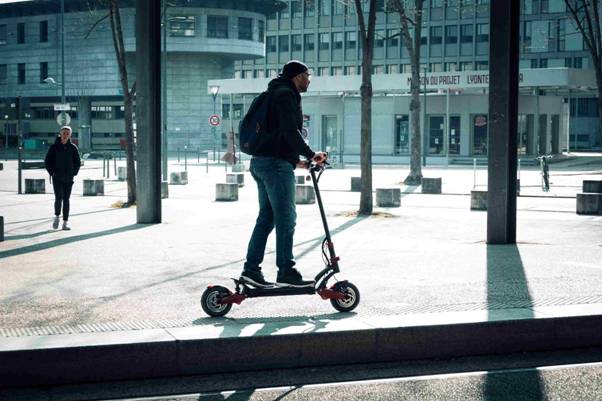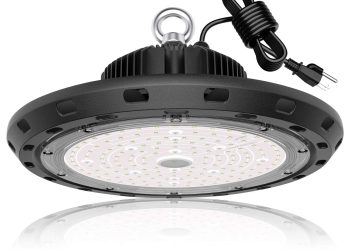Do you ride a fast electric scooter, but you experience cuts out when accelerating?
Fast electric scooters have revolutionized people commuting or cruising around the town, offering quick and convenient alternatives to cars and public transport. Their top speed, high efficiency, and sleek design make them a popular choice to ease your commute without the hassle of traffic or parking.
Scooters aren’t bulletproof. However, they might run into some issues. One of the frustrating things is encountering acceleration issues, leaving you stranded and wondering what to do next.
There’s a solution to all your scooter malfunctions, from battery issues to faulty throttle. So, explore the blog to diagnose the acceleration issues and fix them.
Fast Electric Scooters: A Game-Changer for Commuting
Electric scooters are transforming people’s movement around the streets. Motorized scooters are efficient, eco-friendly, and budget-friendly; scooters for adults are preferable for short and long-distance rides.
Though the average electric scooter has a peak speed of 20 mph, it is not a uniform figure. The explanation, “How Fast Does An Electric Scooter Go? Fastest Models In UK” is a bit more involved than reducing it to a discrete number, as is the case for most things in life.
Battery Issues
E-scooters rely on batteries to power up their motors. If the battery comes to grips, the entire scooter stands still. Let’s discover how batteries work, common battery issues, and their solutions.
How It Powers the Motor
The battery provides power to the motor that propels the scooter forward. The chemical energy circulating in the battery is converted into electrical energy and powers the motor. When the battery is charged, it passes the energy to the motor to ensure it runs without a hitch.
Common Issues With Batteries(They Can Lead to the Scooter Cutting Out)
Scooter cutting out is a serious issue, mostly due to batteries limiting the range. Some of the battery issues include:
Dead battery
Leaving the battery functionless for a long period causes it to lose charge and strength, making it dead.
Overcharging
Overcharging heats the battery cell more than its limit leading to battery explosion. It causes the electrolyte solution to deteriorate and release gas. This gas builds up pressure within the battery and ruptures it.
Undercharging
Not charging the battery to its full capacity? Your battery charges to a partial level that reduces its overall capacity. Thus, it’ll hold less charge and supply minimum power.
Loose or corroded connectors
Connectors between the battery and motor loosen over time if not fastened properly during installation. Even when using a scooter in damp areas, it corrodes the parts leading to loss of power.
Faulty battery management system (BMS)
BMS manages to charge the electric scooter for heavy adults to the proper voltage, preventing overcharging or undercharging. If BMS malfunctions, it won’t regulate charging which fails the battery.
Solutions for Battery Issues
If your scooter experiences battery issues, cutting out when you accelerate, here are a few solutions to troubleshoot and fix the issue:
Check the battery connections
Loose or corroded connectors cause serious issues to the battery. Check the connectors and clean and secure them.
Upgrade the battery
Upgrade to a powerful battery if you frequently use a scooter for long distances or high-speed rides. Look for a higher voltage or capacity battery.
Fix the BMS
A faulty battery management system cuts out when accelerating. So, when you find an issue in BMS, take it to a professional repair or replace it.
Motor Problems
Motors also create problems with acceleration. So, let’s figure them out:
Worn-out motor brushes
Motor brushes are the main component of the spinning armature. Worn-out brushes cause inefficiency, decreasing power, and acceleration.
Burn-out motor windings
The motor windings generate the magnetic field around the motor to power it. If the windings are damaged or burnt out, it may affect the functioning and may not accelerate efficiently.
Loose motor wires
Damaged or loose wiring can cause serious hazards. In such cases, there might be an electric short circuit, or loosened wires may supply reduced current to the motor, decreasing the power output.
Motor controller issues
The dual motor electric scooter controller is responsible for motor power regulation. Therefore, fused or faulty circuits can cause issues supplying the correct current to the motor leading to decreased acceleration.

Outline Solutions
Here’re the solutions depending on specific issues:
Worn out bearings
If the motor produces a grinding noise, the bearings may be worn out; replace them and ensure proper lubrication to avoid future issues.
Faulty motor controller
Check the controller for any visible damage or signs of overheating. If it’s damaged, find an alternative or repair it.
Regular maintenance
Keep a check and balance on the motor’s condition. Clean and lubricate, inspect loose connections, and don’t overload the motor.
Accelerator and Control Issues
The accelerator and controller regulate the 40 mph electric scooter’s speed and performance. The accelerator controls the motor’s speed, and the controller regulates the power delivered to the motor.
How the Accelerator and Controller Work Together to Regulate the Speed of the Electric Scooter
The accelerator signals the controller to pass the power to the motor while the controller regulates the amount of power sent to the motor. Both work together in a closed-loop system; the controller receives input from the accelerator and adjusts power to maintain a consistent speed.
Some Common Issues
The accelerator and controller confront the following issues:
Loose or corroded connectors
When connectors attach the battery to the motor, it detaches or corrodes, preventing the electrical current flow.
Overheating of controller
Overheated controller malfunctions and loses power. It happens when you push the controller too hard or ride without applying brakes for an extended time.
Solutions for These Types of Issues
Here are some solutions to accelerators and control issues that cause scooters for adults to cut out:
Loose or corroded connectors
- Inspect connectors for corrosion, dirt, or damage.
- Clean connectors and apply dielectric grease to prevent corrosion
- Tighten connections to ensure all are secure.
Overheating controller
- Ensure the controller is ventilated
- Avoid using it in hot temperatures for a long time
- If you notice heat coming, cool down the scooter
Dead Throttle
All-terrain electric scooters’ throttle plays a significant role in controlling the scooter’s speed. The throttle won’t accelerate properly or cut out if it gets unresponsive.
A throttle may be dead due to the following:
- Faulty throttle cable
- Damaged throttle control
- Misfunction speed controller
- Loose connectors
- Dead battery
When you suspect a dead throttle, first inspect the battery. Fully charge it and tighten all connections. If the battery is fine, check the throttle cable and control for any damage.
Varla features Eagle One Pro having two 1000W dual hub motors with a power output of 3600W. It also has a 60V 27 Ah lithium-ion battery with a smart battery management system. The E-scooter moves at a speed of 45+ mph and ranges to 45 miles on a single charge.
Specifications:
- Dual hydraulic brakes + ABS
- 11-inch air tubeless tires
- Thumb throttle
- Dual LED lights
- LCD + NFC card
Conclusion
Fast electric scooters are a game-changer for daily rides, but they could face some acceleration issues if not maintained properly. Consider a regular inspection and maintenance plan to avoid cutting out when accelerating.
There are several solutions to troubleshooting, from replacing a faulty battery to repairing motor components. I’ve also used the solution above to fix the scooter battery, motor, accelerator, or controller malfunctions.
Proper maintenance and timely repairs allow you to enjoy speed and convenient rides without worrying about acceleration.








